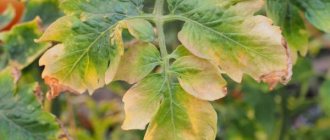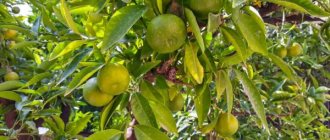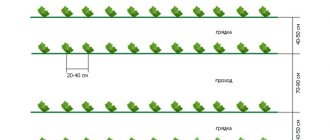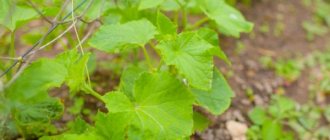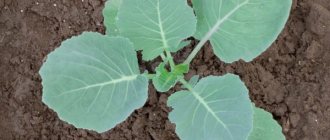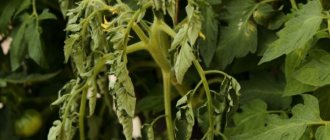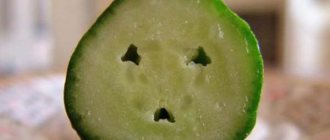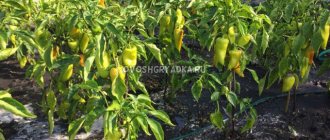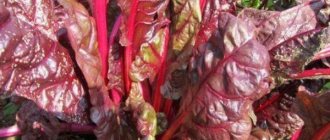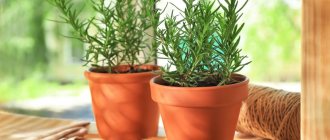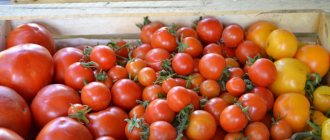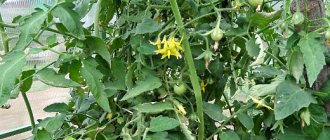Reasons why pepper seedlings turn yellow
In most cases, pepper seedlings suffer due to improper care. Seedlings react to unfavorable conditions by changing the color of the leaf blades. They become yellow and wilted.
Let's look at the main reasons for the yellowing of pepper seedlings and ways to solve this problem.
Pepper seedlings turned yellow due to lack of light
Sunlight is the most important factor in the development of pepper seedlings. Seedlings should receive ultraviolet rays 12-16 hours a day. If there is not enough light, the plants will begin to stretch and turn yellow.
What to do
Place the seedlings on a south or east window. Buy phytolamps. Install reflectors and diffusers. For example, aluminum foil.
Too much sun
Excessive direct sunlight harms plants no less than lack of light. The seedlings still have thin leaves and, being in the sun, they overheat. And since there is no natural cooling (wind) in the apartment, thermal burns occur.
What to do
At the height of the day, move containers with seedlings away from the window. The second way is to diffuse the light. You can cover the glass with paper and hang Roman blinds.
The soil was not selected correctly for the pepper seedlings
These seedlings need light, loose, and, most importantly, nutritious soil. Garden soil is not suitable for growing seedlings. Firstly, it is too greasy and heavy, that is, it does not allow air to penetrate well to the root system. Secondly, it often contains a lot of fungal spores, bacteria and pest larvae.
What to do
Use purchased soil for seedlings. If you have already planted seedlings in garden soil, then plant them in the correct soil. Loosen the soil more often after watering.
Pepper seedlings lack nutrition
If the lower leaves of peppers turn yellow, the reason may be a lack of nitrogen compounds. Nitrogen is the most important microelement for plants. It is he who is responsible for the growth of the green part, that is, stems and leaves. If there is not enough of it, the seedlings turn yellow.
What to do
Spray the peppers with a weak solution of ammonia. It will replenish the lack of nitrogen and drive away pests. How to prepare a working solution, read our article “Ammonia in the garden. Application".
The seedlings were overfed
Eating too much is also bad. Pepper seedlings need to be fed very little. You can determine that there is an excess of nutrition by a whitish coating near the drainage holes.
What to do
Stop feeding. How to properly fertilize peppers is described in our article “Feeding pepper seedlings, how to fertilize them at home.”
Pepper seedlings turn yellow after picking
Pepper seedlings really do not like picking. They have a delicate root system, so at the slightest damage, the plant reacts immediately. If the damage is insignificant, then the seedlings will recover fairly quickly. Perhaps they will just shed their cotyledon leaves.
What to do
To help the pepper roots adapt, you can use a growth stimulator. For example, Zircon, Kornevin, Energen. These drugs will help the roots heal wounds faster and begin to absorb nutrients from the soil.
ON A NOTE . Before using the drug you need to wait 2-3 days. If the plants do not die out, then use fertilizer. If the condition has returned to normal, then nothing needs to be added.
The crops were thickened
This is a very common cause of yellowing seedlings. When plants become crowded in one box, they begin to compete with each other for nutrients and living space. Most often all seedlings suffer.
What to do
If it’s too early to dive, you can thin out the plantings. To do this, carefully pull out the weakest shoots. But it is best to pick the plants into separate containers.
If pepper seedlings turn yellow due to improper watering
Seedlings should be watered moderately and only when the top layer of soil dries out. It is also necessary to carry out careful loosening so that the roots can breathe.
BY THE WAY. Excessive watering is much more often the cause of yellowing of plants than its lack.
What to do
Normalize watering. Loosen the ground. If something like a swamp has formed in the container, then the peppers need to be urgently replanted before the roots rot.
Why did the peppers turn yellow after planting in open ground?
The reason for the yellowing of peppers after transplanting to a permanent place is the same as when picking. The plant simply gets used to the new place. If you carried out the procedure carefully and did not damage the roots, the seedlings will soon come to their senses.
What to do
If even after 5-7 days the yellowing does not subside, then the roots were damaged too much. There is no guarantee that the plants will be saved. It is necessary to carry out emergency feeding with a growth stimulator.
Diseases and pests that cause yellowing of leaves
The disease usually appears as spots rather than solid yellowing. In this case, the spots darken over time and become brown. And only then the entire surface of the leaf plate changes color.
Pests can be noticed if you carry out regular inspection and carefully care for the seedlings.
What to do
Treat with fungicides and insecticides. Also, be sure to treat the seeds before planting. Most of the harmful microorganisms are already on the pepper grains and develop simultaneously with the plant.
What to do, how to save seedlings
To save young peppers, you need to look at which side of the plant the yellowing began.
If the cotyledon leaves have turned yellow
When cotyledon leaves are lost, it is important at what time this happens:
- After the pepper begins to show true greenery, the cotyledons naturally die off. These parts of the culture have fulfilled their function, and the plant does not need them.
- If the seedlings begin to die off when the first pair of leaves is not yet formed, the situation worsens.
Peppers may suffer from a lack of nitrogen or watering at low temperatures. It is enough to add ammonium nitrate as a top-up. It is recommended to infuse the water to the required temperature before watering.
If the seedlings turn yellow and drop leaves
After the soil is watered, it should remain moist, not wet. Excessive dampness leads to rotting of the roots and subsequent death. This unpleasant phenomenon also occurs after a sharp temperature change. If the readings are below 14 degrees, the root, which has not yet become strong, will not be able to absorb nutrients. To survive, the bush will have to find them near the foliage, so it turns yellow. To prevent this, you need to monitor the temperature and maintain a stable temperature, within 20-22 degrees.
If the plant has an acute lack of nitrogen, the leaves become yellow, and then the crop drops them. If the first signs of nitrogen deficiency are visible, you need to apply root and foliar fertilizer with a sufficient amount of nitrogen. To spray plants, use 2 times less concentration. As a preventive measure, one Azogran granule is placed under each bush.
A change in the color of the top leaf also indicates an iron deficiency. If the missing elements are not added to the fertilizing, the foliage will begin to dry out.
Leaves are lost due to improper picking, as the roots are damaged. You must try to complete the procedure with maximum caution. If a problem has already arisen, you need to spray the bushes with Epin, this is a drug that strengthens the plant’s immunity. This article will tell you how to properly water peppers in a polycarbonate greenhouse.
If the inner leaves are yellow
You need to monitor the water regime. When the roots begin to rot, Fitosporin or Trichodermin is added to the soil. Lack of nutrition can be corrected by timely feeding the plant with complex fertilizers, such as Nitroammofoska. Organic nutrients are also suitable, for example, an infusion of chicken manure or mullein. If the crop grows in cold regions, the bed should be covered with dense lutrasil. Read about the characteristics and description of the Vyuga cabbage variety here.
To provide the plant with a sufficient amount of calcium, you need to take egg shells, grind them into crumbs and sprinkle them on the soil.
If the lower leaves turn yellow and they fall off
Further rotting of seedlings can be prevented in the following ways:
- Rearrangement to the sunny side . The leaf curls because the plant is actively growing. To help form it, you need to provide maximum sun.
- Fertilizer. Complex feeding allows the bush to receive microelements.
- Protection from insects and diseases. Aphids or mites reproduce not only on the plant, so careful treatment is required. While the crop is weak and young, a solution of potassium permanganate is sufficient; with later development, you can get rid of aphids in the garden using traditional methods.
It is necessary to monitor the development of the plant already at the stage of green appearance.
Why do pepper seedlings on the windowsill most often turn yellow?
The reason is that on the windowsill, seedlings most often either overheat in the sun or suffer from low temperatures and drafts. If it’s cold on your windowsill or the windows are often open, then the boxes with seedlings need to be rearranged.
Ordinary sheets of office paper on the glass will help protect against direct rays of the sun.
If the temperature on the windowsill is normal and the light is diffuse, then the reason is the spread of a fungal infection or pests.
Main reasons
Pepper is a rather capricious crop, so it reacts almost instantly to any violation of conditions. The leaves turn yellow and dry out due to poor humidity conditions, inappropriate temperature and lighting, after improper replanting or processing. They also dry out and become depleted due to diseases, fungi and pests.
The leaves of pepper seedlings turned yellow in the greenhouse
If your seedlings in the greenhouse have turned yellow, then again it’s a matter of improper care. Check the temperature and light conditions. The greenhouse should not be colder than +12, and it should also be light. Plantings should not be thickened.
Another common option for why seedlings turn yellow in a greenhouse is the wrong soil. If you can buy a sufficient amount of suitable soil for growing seedlings at home, then in greenhouses the soil is usually the same as in the garden. That is, heavy and quite fatty. Seedlings grow poorly in it.
What do we have to do? Firstly, regularly loosen the soil after watering. Secondly, if necessary, deoxidation must be carried out by adding chalk, lime or ash.
Why do seedlings wither and fall leaves?
Falling leaves of seemingly healthy seedlings can be caused by one of the following factors:
- Fungal diseases (fusarium and veritillium wilt);
- Pests;
- Violation of the watering regime.
If your peppers begin to quickly wither, drop leaves and fade without yellowing, then the reason is a fungal infection. Sick plants cannot be saved and they need to be destroyed, and the remaining seedlings should be treated with antifungal drugs (for example, HOM, Oksikhom, Fitosporin, etc.).
If pests are detected, use Fitosporin.
In case of flooding, loosen the soil or pick up the peppers if there is a lot of water.
Change in shade of cotyledons, upper and lower leaves
If the color of the cotyledon leaves of the bell pepper turns yellow, then you can add mineral supplements to the soil and place the plant in the sun. The lower and upper leaves turn yellow on seedlings standing in a draft. The wind can blow on it from the windows. The upper leaves will not have enough nutrients, they will begin to actively absorb them from the ground, leaving nothing to the lower leaves, which gradually dry out. The cause may be contaminated seeds. The solution to the problem is to create favorable conditions. The leaves of bell pepper seedlings turn yellow also because the root system grows strongly and the root shoots become entangled. This happens when plants are close together or there is no picking.
Pepper sheds its leaves for the same reasons - watering with cold water, lack of light and waterlogging of the soil. Another reason why the lower and upper leaves of peppers fall off may be due to the soil. If the seeds were sown in soil taken from the garden and it was not treated, then it is quite possible that larvae of parasites that feed on plant roots remained in it. As a result, yellowed leaves may fall off.
Pests and diseases
Looking at the foliage, one can assume that they were attacked by insect pests or some kind of disease developed. Initially, it begins to turn yellow, curl, bend and dry out. A sick pepper will definitely lose its leaves. This plant is most often attacked by:
- spider mite;
- thrips;
- aphid.
The pest must be dealt with immediately. Ash and tobacco dust help against aphids, if they have not yet taken over a large number of bushes. But you can also wash the leaves well with a solution prepared from 10 liters of water and 100 g of soap. Then spray with any insecticide strictly following the instructions. You can get rid of pests using the drugs “Aktellik”, “Fufanon”, “Intavir”, “Fitoverm”, “Bi-58”, “Akarin” and “Aktara”.
Fungal infections in bell peppers should be treated with Fitosporin. When peppers are affected by late blight, they are treated with Oxyx, Barrier or Ridomil. Bushes infected with phytoplasmosis, fusarium and mosaic must be destroyed, because treatment most often does not give a positive result.
Unsuitable soil composition
Particular attention should be paid to the composition of the soil. Bell peppers require fertile, light soil rich in nutrients and humus. It grows very well on the ground:
May be interesting What are indeterminate peppers: types, popular varieties with descriptions “Ali Baba” pepper: a variety with universal cultivation “Eastern Star” pepper: thick-walled and juicy
- moisture-absorbing;
- with neutral acidity;
- breathable.
You can prepare the soil for seedlings yourself. To do this, mix:
- a little peat;
- sawdust or sand;
- turf land;
- humus.
Add ash, phosphorus-potassium mineral fertilizers or saltpeter. Fill the container with this mixture and pour in a concentrated solution of potassium permanganate for disinfection. Specialized stores sell ready-made substrate that does not require additional components. Heavy clay soils are not suitable for peppers, it is difficult for the roots to absorb nutrients, and the plant does not have enough air. The seedlings grow with difficulty and begin to turn yellow.
Why do the lower leaves turn yellow?
If the lower cotyledon leaves turn yellow, this is normal. Over a certain period of time, they will still turn yellow and fall off, as they have fulfilled their function.
If the true lower leaves turn yellow, then the problem is a nitrogen deficiency. This means that the seedlings need to be fed. You can use urea, or you can use ammonia solution. But don’t be too zealous; from excess nitrogen, seedlings begin to fatten. Therefore, it is better to fertilize several times with a weak nitrogen fertilizer than to apply a lot at once and overfeed the plants.
Why do spots appear on the leaves of pepper seedlings?
The appearance of spots on leaf blades in 99.9% of cases indicates the presence of an infection (fungal, viral or bacterial).
Among the most common diseases of seedlings are powdery mildew, septoria, spotting (brown, dry, etc.). Also, spots can be the beginning of putrefactive processes.
It is better to destroy diseased seedlings immediately and spill the soil with copper solution. Healthy seedlings should be treated with a fungicide and growth stimulant to promote plant health. If the disease began before picking, then the seedlings need to be picked. This is done because there is a possibility of fungal spores remaining in the soil.
Prevention of seedling diseases
There are no special measures to prevent yellowing of pepper leaves. You just need to provide the seedlings with proper care: sufficient heat and light, proper watering and fertilizing, space for growth and development.
Prevents yellowing of plants and pre-planting seed treatment: disinfection and stimulation. The same procedure prevents the development of fungal and bacterial diseases, which also cause yellowing of leaves in pepper seedlings.
Additional tips and tricks
To prevent yellowing of the leaves, it is necessary to water the bushes only with warm water, plant seed material in fertile soil and avoid drafts. Plants should be in the sun for at least 12–14 hours. Before planting, seeds need to be treated and the soil needs to be disinfected.
Previous
Pepper Feeding peppers after planting in a greenhouse: what fertilizers and when to use
Next
PepperDiseases of bell and bitter pepper: treatment and prevention
Common mistakes
- Ignoring the problem. The yellow color of the leaves of seedlings is abnormal. It is necessary to determine the cause and begin the correct treatment.
- Excessive watering. Novice gardeners often believe that watering is the solution to all problems. Although much more often everything happens exactly the opposite. It is excess moisture that destroys seedlings.
- Overly intensive treatment. Faced with a problem, many begin to zealously solve it, as a result the plants suffer even more. Excess of drugs causes chemical burns. You need to approach treatment wisely so as not to cause more harm.
Answers to frequently asked questions
What to do if pepper seedlings turn yellow?
Check the conditions for growing seedlings. Isn't it time for a pick? Are the plants damaged or flooded? If everything is in order, then look for the cause in insect pests and diseases.
Is it possible to save seedlings?
In most cases, yes. But for this you need to take the necessary measures immediately.
How to prevent the disease?
Just take proper care of the seedlings. It would be enough.
How to prevent yellowing and falling leaves
You can avoid various ailments and diseases of pepper seedlings - you just need to follow the rules of agricultural technology.
Main methods of prevention:
- buy only high-quality seeds;
- disinfect the soil before planting;
- observe the temperature regime;
- Seedlings need to be watered in a timely manner;
- protect seedlings from direct sunlight;
- Feed regularly and without fanaticism;
- carefully inspect plants for pests;
- the soil for seedlings should be well-drained, light, warm, with a high content of peat or perlite;
- do not place peppers in the shade;
- To be on the safe side, before planting, water the soil with Fitosporin.
Follow these simple rules and your seedlings will grow healthy and enjoy a bountiful harvest.
